The Economics and Statistics Division maintains archives of previous publications for accountability purposes, but makes no updates to keep these documents current with the latest data revisions from Statistics Canada. As a result, information in older documents may not be accurate. Please exercise caution when referring to older documents. For the latest information and historical data, please contact the individual listed to the right.
<--- Return to Archive
For additional information relating to this article, please contact:
January 25, 2019NOVA SCOTIA POPULATION ESTIMATES BY AGE AND SEX, AS OF JULY 1, 2018 Today, Statistics Canada released estimates of population for Nova Scotia by age and sex. While the total population for July 1, 2018 was reported in late 2018, age and sex detail were not made available until today.
As of July 1, 2018, Nova Scotia's population is an estimated 959,942, a gain of 9,262 persons (1.0%) compared to the estimate for July 1, 2017.
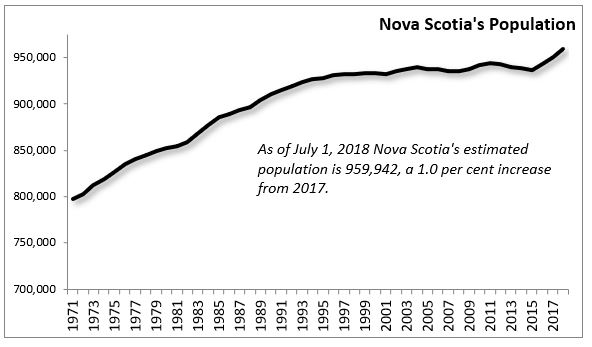
As of July 1, 2018, 17.2% of Nova Scotians were in the 0-17 age category, 62.4% were between the years of 18 and 64, and 20.4% were 65 and older. This illustrates a continuing ageing trend for the province. In 2008, only 15.3% of Nova Scotians were aged 65 or older.
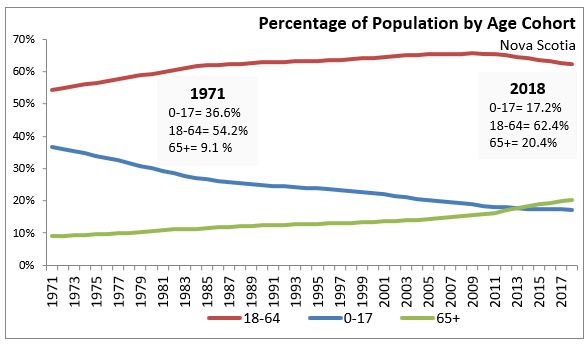
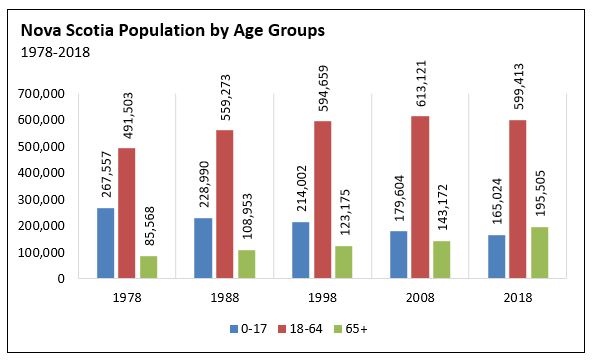
Looking at the breakdown of males and females in the province, in 2018, 48.9% of the province (469,565) was male and 51.1% (490,377) female.
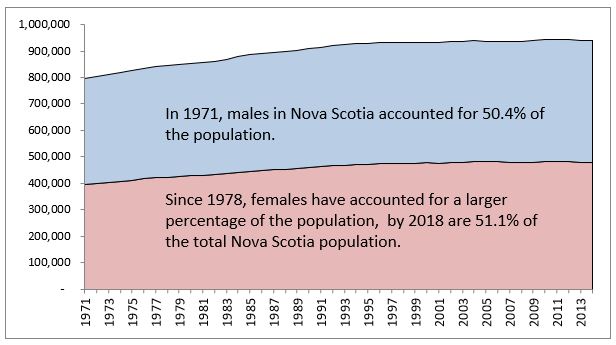
Compared to the past two decades, there has been little change in this breakdown. However, as the following population pyramids show, comparing 2018 to 2008 and 1998, Nova Scotia is losing its "replacement" population in the lower age groups. This is illustrated as the baby boomer cohort progress upward through the population pyramids.
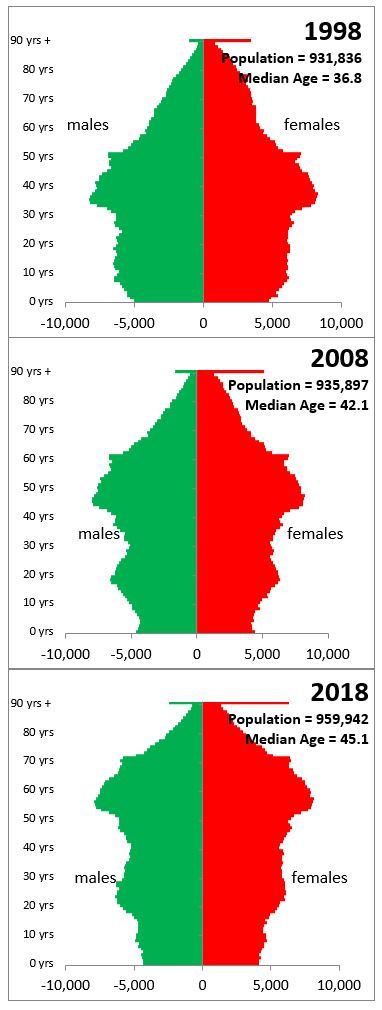
Comparison with other Provinces
Nova Scotia has the third largest proportion of seniors (65+) in the country, and the second lowest share of population aged under 18.
However, the aging trends and loss of younger cohorts is not unique to Nova Scotia. All provinces have seen a loss of the youth cohort (0-17 in this illustration). The cohort aged 18-64 shows variable results across the country as the baby boom generation ages out of this group. For example, while all provinces saw an increase in the population (percentage) in this cohort between 1998 and 2008, many are seeing a more drastic decline in the proportion of 18-64 year olds in the decade following.
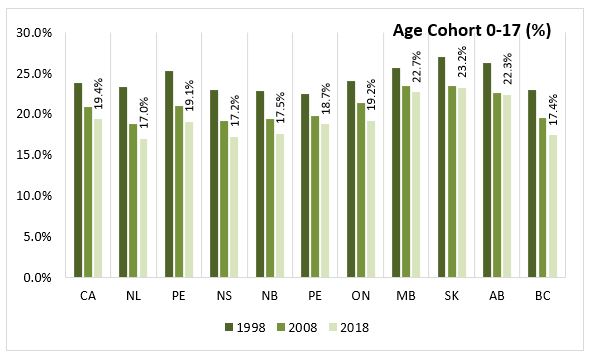
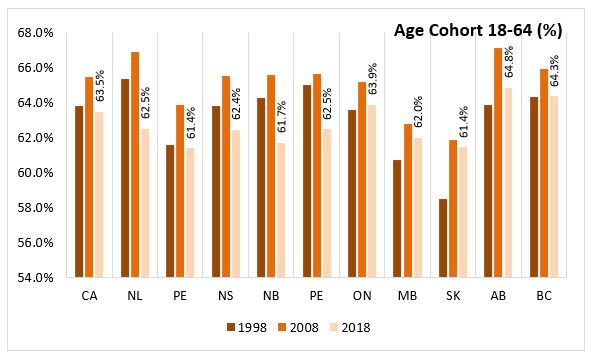
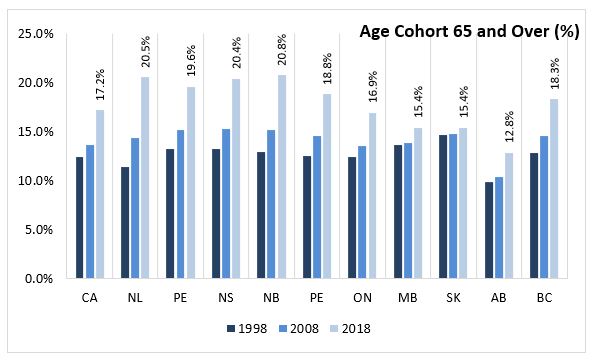
Median Age
Nova Scotia's median age in 2018 is 45.1 years, third highest among provinces (Newfoundland and Labrador at 46.5 and New Brunswick at 45.9 are higher). Manitoba and Saskatchewan both showed decreases in median age between 2008 and 2018, but all other provinces (and the national average) increased over that decade.
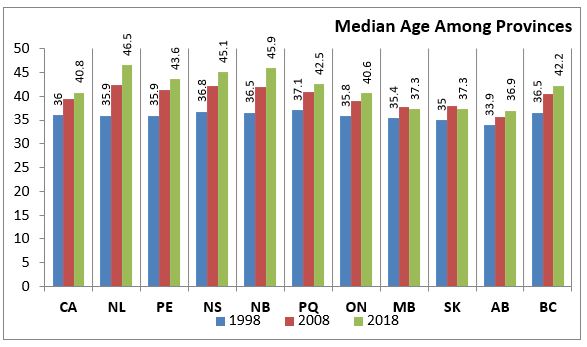
International and Interprovincial Migration
Immigration to Nova Scotia in 2018 was an estimated 5,137 persons, over half of which (51.3%) were in the 15-34 year age cohort. The youth cohort (0-14 years, includes the "-1" cohort) acconted for 1,120 immigrants, or 22.2 per cent, and the 35-54 cohort accounted for 1,189 persons, or 23.1 per cent. Those 55 and older make up the smallest number of international migrants to Nova Scotia on an annual basis, and in 2018, accounted for 176 persons, or 3.4 per cent.

Interprovincial migration is a key component of population growth for Nova Scotia. Though subject to rapid swings from positive to negative, in recent years, net interprovincial migration has trended positively (compared to an average net interprovincial migration of -519 per year over the past ten years).
Within age groups, the 15-34 age group is the most "mobile", and usually accounts for the majority of interprovincial migration in any given year. In 2017/2018, the 15-34 age cohort saw 7,364 in-migrants to Nova Scotia and 6,745 out-migrants from Nova Scotia. The 0-14 age cohort also is a key driver of interprovincial migration numbers. In 2017/2018, there were 2,587 in-migrants to Nova Scotia and 2,039 out-migrants in that cohort.
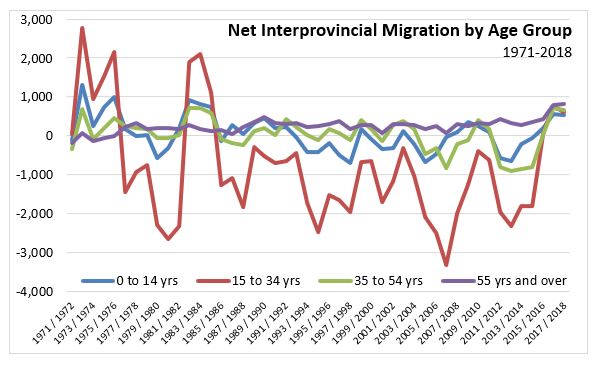
Non-permanent residents added a net 2,975 persons to Nova Scotia between 2017 and 2018, the majority of whom were in the 15-34 age group (82.2%). The 35-54 age cohort (9.1%) and the 0-14 age cohort (8.7%) were the next highest contributors. Overall, net nonpermanent residents were up by 868 in 2018.
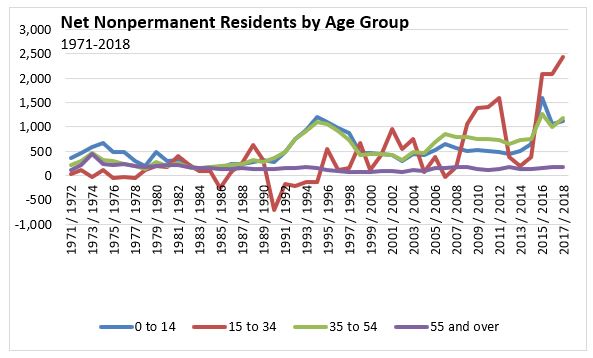
Source: Statistics Canada Tables:
17-10-0005-01 - Population estimates on July 1st, by age and sex
17-10-0014-01 - Estimates of the components of international migration, by age and sex, annual
17-10-0015-01 - Estimates of the components of interprovincial migration, by age and sex, annual
<--- Return to Archive